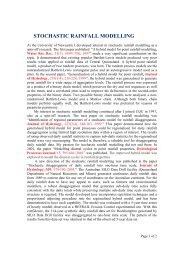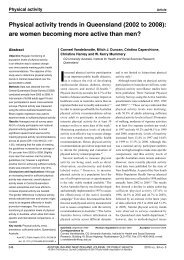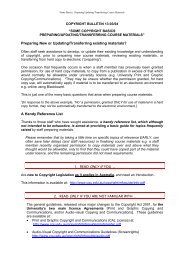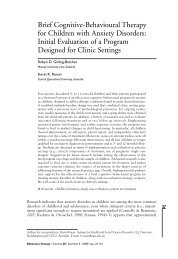2007 Annual Report - Central Queensland University
2007 Annual Report - Central Queensland University
2007 Annual Report - Central Queensland University
Create successful ePaper yourself
Turn your PDF publications into a flip-book with our unique Google optimized e-Paper software.
<strong>2007</strong> Centre for Plant & Water Science <strong>Annual</strong> <strong>Report</strong>OXYGATION OF SUB-SURFACE DRIP IRRIGATED COTTON GROWN ONDIFFERENT SOIL TYPESIn Australia, sub-surface drip irrigation (SDI) has been successfully used both in garden andcommercial cultivation with a range of field crops including cotton. Field crops grown indifferent soil conditions, especially after irrigation, often experience hypoxia, a state of reducedoxygen supply for root and microbial respiration. Well aerated soils favour root respiration andaccelerate essential microbial activity which ultimately helps in reducing plants exposure tostress. The process of supplying induced pressurised air through sub-surface drip irrigation isbetter known as oxygation.Cotton is grown predominantly in heavy clay soils in central <strong>Queensland</strong>; therefore the croprhizosphere is often exposed to hypoxia upon irrigation. To study the effect of oxygation oncotton in different soils, an experiment was undertaken at CQ<strong>University</strong> in the <strong>2007</strong>-08 season.Preliminary outcomes of this research are presented in this progress report.Bollgard II variety of cotton was planted on 27th December <strong>2007</strong> in 16 concrete tubs (3.10 mlength, 0.85 m width and 0.58 m depth) at <strong>Central</strong> <strong>Queensland</strong> <strong>University</strong>, Australia. The cropspacing was maintained as 72 cm row-to-row and 10 cm plant-to-plant. Two common cottongrowing soil types (heavy clay black and red loam) of Australia were introduced in the tubs.Oxygen was supplied with the Mazzei venturi model 384 and oxygation commenced from 1 st ofFebruary 2008. Emitters were placed at two different depths (10cm and 30cm) in the soil forthe delivery of water and air. Different crop and soil parameters such as lint yield, root lengthdensity, transpiration, photosynthesis, soil respiration, soil moisture, parameters related to cropphenology and water use efficiency were recorded.Photo 1: Set of 16 concrete tubsPhoto 2: Cotton crop before harvestThe positive response of lint yield to oxygation was significant in red soils. However, forheavy clay soil, the response of oxygation in terms of yield is not consistent as shown in Figure1. In terms of root length, oxygation treatment on the red soil had showed a significant positiveeffect as shown in Figure 2.28
















